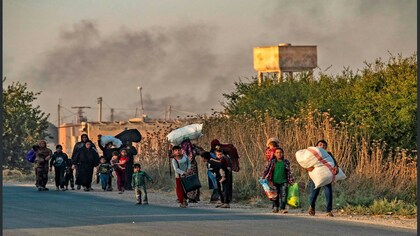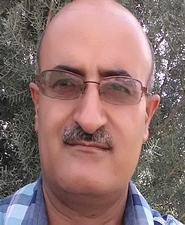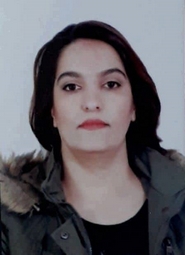The Last Solution - Mehrangis Kar
16:12 - 27 October 2011

All of us and under different pretexts have repeatedly spoken on the structural political obstacles of the Islamic republic of Iran and the weaknesses of the current constitution for attaining some levels of democracy and respect for human rights. We have even paid a price, at times high, for expressing our concerns and disclosing the structural problems of the system.
But today we are witness to the supreme leader of Iran talking about structural obstacles in the Islamic republic. Speaking to a group of Kermanshah University students and officials, ayatollah Khamenei did just this and even pronounced that the political structure of the country could be changed. Even though these remarks were generalities and ambiguous at best, they nevertheless immediately resulted in discussions on the subject, and pushed aside other reports from Iran. “Under the current circumstances,” ayatollah Khamenei said, “the political order of the country is a presidency where the chief executive is directly elected by the people which is a good and effective mechanism but if it is felt in the distant future that a parliamentary system is a better way to elect the officials of the executive branch, there is no issue in changing the existing order.” And to protect himself and provide legitimacy to the possible changes, he reminded his audience that ayatollah Khamenei during his lifetime had issued the order to eliminate the post of prime minister from the executive branch in Iran as a measure to change the general structure of the state to attain the ideals and principles of the revolution. And even though he did not expressly talk of eliminating the presidential post from the constitution, this interpretation has certainly emerged from his remarks.
But the question that needs to be asked is this: Which specific ideal or principle of the revolution does Khamenei have in mind that calls for a change in the republican nature of the regime? Are issues of human rights and democracy “ideals” that he is worried about or must we search somewhere else to learn of his true concern? A review of events since the reform period indicates that the reformist president of the time had in his own way challenged the absolute authority of the supreme leader. And more recently, the principlist president too did the same, in his own manner. Both presidents served as conduits for: 1-a disgruntled people who expressed their opposition to the president by taking to the streets; 2-elected and appointed officials to take positions against each other; and, 3-transforming the political crisis into a human rights issue and discredit the image of the regime at the global stage.
Iran’s leader and his advisors have come to the conclusion that the problem lies with the only elected official at the executive level, i.e., the president. If the position were eliminated, it would not endanger the absolute authority in the country but would even provide relief to it. Without a president, people would not have the excuse to take to the streets. In the absence of a president, the executive branch which would probably comprise of a prime minister and a cabinet, which would emerge from the Majlis to meet the necessary qualifications. But here again, which Majlis are we talking about? Let’s not forget that this is the Majlis one whose hopefuls have to be screened by six clerics who are directly appointed by the supreme leader to sit on the Guardians Council and who are totally subservient to him.
If such a constitutional change is implemented, here is the outcome that will emerge:
1-The regime will be relieved from the crises-prone elections. There will no longer be a need to engage in various machinations to attract the public into the voting boots to claim massive public participation and then display this to the world as a sign of the legitimacy of the regime, not to mention the subsequent suppression of the sources for the mass participation.
2-There would no longer be any need for electoral fraud, thus preventing the repetition of events that took place following the June 12, 2009 elections. Protestors in places such as the Kahrizak prison would not be killed because of a stampede and the presence of other notorious prisons would not be uncovered by the public.
3-Civil society will be organized by the state. At one of its ends will be the Majlis while at the other will be authorities in the executive branch.
4-Nobody will talk again about a parallel or dual regime, a dangerous talk in any case. Sovereignty will be uniform.
But will these new structural changes and measures, whose details remain unknown, solidify the ideals and principles of the second leader of the Islamic republic and reduce the costs of event to him? Is this elimination of the presidency, the way we understand it, not the very coup that the regime has been accusing its opponents of? This coup will create a streamlined dictatorship with a uniform structure/organization that will do away with conflicts, checks, competition, etc that erupt between the political institutions of the state.
Assuming that this is the plan to be implemented, the most important issue that reigns over Iran today, and is even mentioned within the most inner circles of the system, and is nothing other than the attainment of greater freedoms and rights, shall not only not be weakened but shall in fact be strengthened. The nation over which the Shah rained, and not ruled constitutionally, has been fundamentally transformed. The country in which the king presented his prime minister of choice to the Majlis for approval, and where the parliament lacked the guts to reject a proposal, has been completely turned around. The traditional elements that have dominated society over the modernists are now weakened. As a result, ayatollah Khamenei’s recent remarks have created anxiety among Iranians. These events echo older slogans: The Shah cannot stage a coup. The Shah does not use the sword against the constitution, which is the foundation of his authority.
Perhaps we are rushing to judgment. But there is no doubt that the leader wants to change the political structure of this regime. He wants to eliminate the post of the presidency. But through what legal mechanism? This is an important question to be asked. The constitution does not allow such a change. Article 177 acknowledges the need for a review of the document but also stresses that the republican nature of the regime, among other elements such as the rule of the clerics (velayate amr), cannot be changed.
The last time the constitution was amended on orders of the previous supreme leader, the reign of clerics with an emphasis on its absolute nature was strengthened. The dictatorial aspect of the state was reinforced as the position of the prime minister was eliminated, even though the republican nature of the regime survived. Today, it appears that another coup is on its way and that conservatives and their allies are tired of people protesting in the streets. The brutal and violent suppression of people has not produced the desired results, from the perspective of the state. They want to decrease the costs of their rule. They are afraid of elections. They are afraid of people. They even view elections, which are managed by their own Guardians Council, to be an irritant.
A coup is on its way and this time it is the regime itself that is orchestrating it. The Iranian people desire to have a constitution based on the universal declaration of human rights while the regime is working to reduce the scanty elements of the existing republicanism of the system.
Source: By Mehrangis Kar, Rooz Online
But today we are witness to the supreme leader of Iran talking about structural obstacles in the Islamic republic. Speaking to a group of Kermanshah University students and officials, ayatollah Khamenei did just this and even pronounced that the political structure of the country could be changed. Even though these remarks were generalities and ambiguous at best, they nevertheless immediately resulted in discussions on the subject, and pushed aside other reports from Iran. “Under the current circumstances,” ayatollah Khamenei said, “the political order of the country is a presidency where the chief executive is directly elected by the people which is a good and effective mechanism but if it is felt in the distant future that a parliamentary system is a better way to elect the officials of the executive branch, there is no issue in changing the existing order.” And to protect himself and provide legitimacy to the possible changes, he reminded his audience that ayatollah Khamenei during his lifetime had issued the order to eliminate the post of prime minister from the executive branch in Iran as a measure to change the general structure of the state to attain the ideals and principles of the revolution. And even though he did not expressly talk of eliminating the presidential post from the constitution, this interpretation has certainly emerged from his remarks.
But the question that needs to be asked is this: Which specific ideal or principle of the revolution does Khamenei have in mind that calls for a change in the republican nature of the regime? Are issues of human rights and democracy “ideals” that he is worried about or must we search somewhere else to learn of his true concern? A review of events since the reform period indicates that the reformist president of the time had in his own way challenged the absolute authority of the supreme leader. And more recently, the principlist president too did the same, in his own manner. Both presidents served as conduits for: 1-a disgruntled people who expressed their opposition to the president by taking to the streets; 2-elected and appointed officials to take positions against each other; and, 3-transforming the political crisis into a human rights issue and discredit the image of the regime at the global stage.
Iran’s leader and his advisors have come to the conclusion that the problem lies with the only elected official at the executive level, i.e., the president. If the position were eliminated, it would not endanger the absolute authority in the country but would even provide relief to it. Without a president, people would not have the excuse to take to the streets. In the absence of a president, the executive branch which would probably comprise of a prime minister and a cabinet, which would emerge from the Majlis to meet the necessary qualifications. But here again, which Majlis are we talking about? Let’s not forget that this is the Majlis one whose hopefuls have to be screened by six clerics who are directly appointed by the supreme leader to sit on the Guardians Council and who are totally subservient to him.
If such a constitutional change is implemented, here is the outcome that will emerge:
1-The regime will be relieved from the crises-prone elections. There will no longer be a need to engage in various machinations to attract the public into the voting boots to claim massive public participation and then display this to the world as a sign of the legitimacy of the regime, not to mention the subsequent suppression of the sources for the mass participation.
2-There would no longer be any need for electoral fraud, thus preventing the repetition of events that took place following the June 12, 2009 elections. Protestors in places such as the Kahrizak prison would not be killed because of a stampede and the presence of other notorious prisons would not be uncovered by the public.
3-Civil society will be organized by the state. At one of its ends will be the Majlis while at the other will be authorities in the executive branch.
4-Nobody will talk again about a parallel or dual regime, a dangerous talk in any case. Sovereignty will be uniform.
But will these new structural changes and measures, whose details remain unknown, solidify the ideals and principles of the second leader of the Islamic republic and reduce the costs of event to him? Is this elimination of the presidency, the way we understand it, not the very coup that the regime has been accusing its opponents of? This coup will create a streamlined dictatorship with a uniform structure/organization that will do away with conflicts, checks, competition, etc that erupt between the political institutions of the state.
Assuming that this is the plan to be implemented, the most important issue that reigns over Iran today, and is even mentioned within the most inner circles of the system, and is nothing other than the attainment of greater freedoms and rights, shall not only not be weakened but shall in fact be strengthened. The nation over which the Shah rained, and not ruled constitutionally, has been fundamentally transformed. The country in which the king presented his prime minister of choice to the Majlis for approval, and where the parliament lacked the guts to reject a proposal, has been completely turned around. The traditional elements that have dominated society over the modernists are now weakened. As a result, ayatollah Khamenei’s recent remarks have created anxiety among Iranians. These events echo older slogans: The Shah cannot stage a coup. The Shah does not use the sword against the constitution, which is the foundation of his authority.
Perhaps we are rushing to judgment. But there is no doubt that the leader wants to change the political structure of this regime. He wants to eliminate the post of the presidency. But through what legal mechanism? This is an important question to be asked. The constitution does not allow such a change. Article 177 acknowledges the need for a review of the document but also stresses that the republican nature of the regime, among other elements such as the rule of the clerics (velayate amr), cannot be changed.
The last time the constitution was amended on orders of the previous supreme leader, the reign of clerics with an emphasis on its absolute nature was strengthened. The dictatorial aspect of the state was reinforced as the position of the prime minister was eliminated, even though the republican nature of the regime survived. Today, it appears that another coup is on its way and that conservatives and their allies are tired of people protesting in the streets. The brutal and violent suppression of people has not produced the desired results, from the perspective of the state. They want to decrease the costs of their rule. They are afraid of elections. They are afraid of people. They even view elections, which are managed by their own Guardians Council, to be an irritant.
A coup is on its way and this time it is the regime itself that is orchestrating it. The Iranian people desire to have a constitution based on the universal declaration of human rights while the regime is working to reduce the scanty elements of the existing republicanism of the system.
Source: By Mehrangis Kar, Rooz Online



